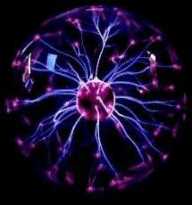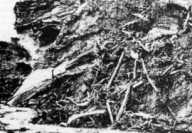|
THE HITCHHIKER'S GUIDE TO THE GALAXY -- ILLUSTRATED SCREENPLAY & SCREENCAP GALLERY |
|
[Trillian] I don't think I can stand that robot much longer, Zaphod. 'The Encyclopaedia Galactica defines a robt 'as a mechanical apparatus designed to do the work of a man. Robstown, city, Nueces County, in the Coastal Bend area, just west of Corpus Christi, south Texas, U.S. It developed around a store opened c. 1909 by Robert Driscoll (whence Robstown) at the intersection of the … small pieces of furniture and household articles, especially in such personal items as snuff boxes and hand mirrors; these items were often made of gilded bronze. In wall decorations of wood or plastic, rocaille features not only shells, pebbles, and scrolls but also flowers … SIRIUS CYBERNETICS CORP. 'The Marketing Division of the Sirius Cybernetics Corporation ______________ Librarian Comments: "Robstown, Texas, by Christopher Long, The Handbook of Texas Online ROBSTOWN, TEXAS. Robstown, at the intersection of U.S. Highway 77 and State Highway 44 in north central Nueces County, was established about 1906 by real estate developer George Paul of Washington, Iowa, at the junction of the Texas Mexican and the Brownsville and Mexican railroads. The town was named for Robert Driscoll. It grew rapidly after the development of the Winter Garden Region as a truck-farming area and the discovery of oil in Nueces County in 1930. The population was 948 in 1920, 4,183 in 1931, and 6,100 in 1940. By 1948 Robstown had seven cotton gins, five packing sheds for vegetables, five schools, twenty churches, and 220 businesses. The town incorporated in 1912 and adopted a mayor-council form of city government in 1948. A ten-acre park and swimming-pool complex was completed in 1963 to expand the municipal recreational facilities. Among the businesses reported in the 1960s were companies related to the petroleum industry, a ready-mix concrete producer, and portable-building manufacturers. The population grew steadily during the 1960s and 1970s, and in 1980 Robstown had 12,100 residents. Since that time the population has remained relatively static, with some 12,849 residents reported in 1990 and 12,727 in 2000. The economy of the town is supported by the surrounding agricultural and petroleum interests. BIBLIOGRAPHY: Nueces County Historical Society, History of Nueces County (Austin: Jenkins, 1972). "Driscoll, Robert, Jr.," by Frank Wagner, The Handbook of Texas Online DRISCOLL, ROBERT, JR. (1871-1929). Robert Driscoll, lawyer, banker, rancher, and early advocate for the port of Corpus Christi, was born near Victoria, Texas, on October 31, 1871, the son of Robert and Julia (Fox) Driscoll. He attended public school in Rockport and surrounding areas, and then went to Georgetown University before finishing a degree in 1893 at Princeton University. He maintained a private law practice in New York until 1903, when he accompanied his elderly mother to England for medical treatments. Upon her death in 1906, he returned to Texas. That year he began concerning himself with aggressive management of the Driscoll estate, of which he assumed control after his father's death in 1914. At their apex, the Driscoll holdings included 125,000 acres in Duval, Jim Wells, and Nueces counties. Driscoll was extensively involved in banking and land speculations and in bringing farming to the lower Texas coastal plains. He was president of several large corporations, among them Corpus Christi National Bank, Corpus Christi Trust Company, Kingsville Producing and Milling Company, and the International Refining Company of San Antonio. He was also a director of the Frost National Bank in San Antonio, the San Antonio Joint Stock Land Bank, and the Guaranty Title Company of Corpus Christi. He was a coincorporator of the St. Louis, Brownsville and Mexico Railway. Driscoll was instrumental in developing the Rabb Pasture into farmlands and in founding the towns of Bishop and Robstown, the latter of which, along with the nearby town of Driscoll, was named after the Driscoll family. He was chairman of the port of Corpus Christi from 1926 until his death in 1929. An earnest Catholic, Driscoll endowed and supported several church benevolences and was a member of the board of the Corpus Christi College-Academy, a Catholic institution, for a time. He died in San Antonio on July 7, 1929, from complications following the amputation of his leg. Driscoll was buried at the family mausoleum in the San Antonio City Cemetery. On the day of the funeral the mayor of Corpus Christi, P. G. Lovenskiold, requested all businesses to close for the hour of the burial. A memorial to Driscoll was erected at the port, and his sister and only survivor, Clara Driscoll, left, upon her death in 1945, the Robert Driscoll and Julia Driscoll and Robert Driscoll, Jr., Foundation, which included among its beneficiaries the Driscoll Foundation Children's Hospital in South Texas. BIBLIOGRAPHY: Corpus Christi Times, July 8, 1929. Ellis A. Davis and Edwin H. Grobe, comps., The New Encyclopedia of Texas, 4-volume edition. The Driscolls: Benefactors of South Texas (MS, Kilgore Collection, Corpus Christi State University). San Antonio Express, July 9, 1929. Vertical Files, Barker Texas History Center, University of Texas at Austin (Robert Driscoll, Clara Driscoll, Driscoll Family). The History of the Port of Corpus Christi: 1926-2001, by PortofCorpusChristi.com, Originally written by M. Harvey Weil in April 1986 and updated by the Port Staff in January 1998: History of the Port In speaking of the spitfire pilots who saved England from a Nazi invasion during the 1940 Battle of Britain, Winston Churchill said, "Never have so many owed so much to so few". That statement can be applied to the Port Commissioners who, in the 75 years since the first Commission was appointed in 1923, have served the Port of Corpus Christi. During this period of time there have been only 23 Commissioners appointed. Initially, under the applicable law, there were only three Navigation Commissioners. They were appointed each two years by the "Navigation Board", a joint meeting of the Nueces County Commissioners Court and the City Council of the City of Corpus Christi. In 1973, by a special act of the Legislature, the number of Commissioners was increased to five; all appointed each two years by the "Navigation Board" as before. Another special act of the Legislature in 1983 increased the number to seven. Of the seven, four are appointed by the Commissioners Court and three by the City Council. Appointments are for staggered three-year terms, with one to be appointed by each government body every year and the County to appoint two each third year. All Port Commissioners have served without pay and, over the years, except for $5,300,00 in bonds paid through ad valorem taxes for certain improvements, the Port has acquired and owns many millions of dollars of Port facilities. In 1985 a bond issue of $25,000,000 was approved for Navy Homeport facilities. Except for the "Homeport" tax bonds, all other tax bonds have been paid many years ago. Although the statutes under which the Navigation District was organized and operates authorizes the voters to authorize a tax for operating the Port and for maintaining its facilities and although many Ports have such a tax, the citizens of Nueces County have never asked for such authorization. Except for tax bonds issued to construct facilities as above mentioned, the Port has been self-supporting. Said another way, Nueces County Navigation District No. 1 (now the Port of Corpus Christi Authority of Nueces County, Texas) is unique in Texas political history, not only because of the relatively few in number of the Port Commissioners who have served over the 75 years of its life but because it has been self-supporting from its inception. The District has never had a tax for operations. It owns over 21,000 acres of land, of which approximately 16,000 acres is submerged land, 8 cargo docks and 11 oil docks worth millions of dollars, and, except for the Homeport bonds, has only issued $5,300,000 in tax bonds. Churchill's statement about the Spitfire pilots may also be applied to the management of the Port. During the 70 years since the Port was opened, there have been only six persons to serve as its principal manager, six to serve as its Engineer (and one of these, Colonel Adams, at the same time served as Port Director), six to serve as its Harbormaster, four to serve as its outside counsel, and four to serve as its Internal Auditor and Finance Director (the first of the auditors, a gentleman who served for more than forty years, was John Barnes, father of former Nueces County Judge, Robert N. Barnes). The Port has benefited greatly from the continuity of management which it has had. Undoubtedly one of the principal reasons for the success of the Port has been the continuity of its management - the Commissioners appointed by the Commissioners Court and City Council - the Port Directors, Engineers and Harbormasters employed by the Navigation Commissioners - and the attorneys in outside firms appointed as general counsel. The continuity in these positions has afforded the Port the benefit of past experience in the areas which are most important - overall management, engineering and legal matters. The Beginnings In 1920, after local leaders had shown the need, the citizens of Nueces County were able to get the Congress of the United States to authorize the Corps of Engineers to study the feasibility of the creation of a deep water port through the Aransas Pass, that is, the jetties at Port Aransas. The study included the possibility of locating the Port at Rockport, Aransas Pass, Port Aransas and at Corpus Christi. Of the four possible locations, Corpus Christi was selected. There were sound reasons for such selection. In 1916 and again in 1918, devastating hurricanes had struck the area. Port Aransas, Rockport and Aransas Pass were low and had been heavily inundated with storm tides. Also, the latter two were served by only one railroad, the S.A.&A.P. (Subsequently known as the Southern Pacific). Port Aransas had no railroad. On the other hand, Corpus Christi, with its bluff of 39 to 40 feet (which is the highest point on tidewater between Veracruz and Miami) was served by three railroads which included the Texas Mexican Railway, The S.A.U.&G. (Subsequently known as the Union Pacific) and the S.A.&AP Railroads. The recommendation as to the location originated in the Galveston office of the Corps of Engineers but had to go to Washington through channels. It was to be made by the District Engineer who at the time was Major L. M. Adams. He later was promoted to Colonel and, upon retirement, became Port Director at the Port of Corpus Christi. He served in that capacity for 17 years from 1930 until 1947. The study to pick the site was made in the summer and fall of 1921. Roy Miller, who has since been hailed as a port builder, was the Major. In the fall of 1921, he was the first to learn of Major Adams' recommendation. Mr. Richard King told the story this way: "Roy came to me and asked if I could arrange a hunt at the King Ranch. I called Bob Kleberg and the hunt was arranged." "The three of us drove to the ranch. It was an extremely hot day in December. Major Adams, the perfect Army officer at all times, came in uniform. We drove around most of the day but it was extremely hot and no bucks were sighted. Late in the afternoon, the ranch hand who was driving the car told me, in Spanish, that because it was so hot all the animals were up in the brush and that the only way to get a deer was to walk into the brush." "I relayed this information to Colonel Adams who without hesitancy an even though in uniform (necktie, jacket and all) went with the ranch hand into the brush." "Roy and I waited in the car. After a substantial period of time we heard a shot. After another waiting period, out of the brush came Major Adams and the ranch hand dragging a nice buck. Major Adams' neat uniform was askew. He had a slight thorn tear in his jacket but was grinning from ear to ear. "We were staying in the bedrooms at the front on the second floor at Santa Gertrudis, that is, the 'Big House'. Roy came to me and asked if I could arrange for a bottle of whiskey. I did this. Roy took it with him into Major Adams' room. "Two or three drinks later Roy came out of the room, came to my room, knocked on the door, opened it and said, "We've got it!" As a result of the recommendation, a petition was circulated among taxpayers, signed and presented to the Nueces County Commissioners Court requesting that an election be called to create a navigation district to be known as Nueces County Navigation District No. 1. The District was to encompass all of Nueces County; that is, its boundaries were to be coextensive with Nueces County. The petition also requested that the Commissioners Court call an election to authorize the issuance of $1,000,000 in tax bonds. On November 13, 1922, following an election held on October 31, 1922, the Commissioners Court counted the votes and entered its order creating the Navigation District. The Port of Corpus Christi was born. From the date the Navigation District was created in 1922 to 1981, the name of the District was Nueces County Navigation District No. 1, and the Commissioners were designated as Navigation and Canal Commissioners. They served on the Board of Navigation and Canal Commissioners. On May 20, 1981, a special act of the Legislature became effective, changing the name of the District to Port of Corpus Christi Authority of Nueces County, Texas, the name of the Commissioners simply to "Port Commissioners". In 1923, the U.S. Congress had authorized the Corps of Engineers to construct a channel 25 feet in depth with 200 foot bottom width, from the Gulf through the jetties at Port Aransas to a point on the shoreline on Corpus Christi Bay at the mouth of a shallow bayou. Channel dredging commenced in January 1925. It was completed in January 1926. The cost to the United States was $1,800,261.00. Proceeds from the sale of the $1,000,000 of bonds authorized when the District was created were used to acquire land, to dredge the turning basin and to construct the first docks. As the entrance channel cut a small two-lane vehicle bridge over the bayou and the S.A.&AP (later Southern Pacific) railroad trestle over the bayou, the City of Corpus Christi participated by constructing the Bascule Bridge. Commencing in 1932, the Navigation District took over the expense of operation and ordinary maintenance of the bridge until it was removed in 1960. On September 14-15, 1926, there was an official "statewide" celebration of the opening of the Port. At that time the three Navigation Commissioners were Robert Driscoll, Chairman; John W. Kellam of Robstown; and W.W. Jones. In the early days of the Port, cotton was king. Nueces County and surrounding counties were among the State's leaders in cotton production. The first business at the Port was on Port-owned land which was franchised or leased for a cotton compress to the Aransas Compress Company. It was located adjacent to and just behind Cargo Docks 1 and 2. Near the end of cotton season ships loading cotton (and also lead from the Mexican smelters at Monterrey) were often docked two abreast. There were four cargo docks when the Port opened. The use of the Port from its opening was so great that after only two years, in 1928, the Port went to the people with an issue of an additional $1,500,000 in bonds to build two more cargo docks. In 1930, the channel was deepened to 30 foot depth conditioned that the Navigation District provide a maneuvering basin inside the breakwater (for maneuvering through the narrow Bascule Bridge). The District provided the basin at its cost. In 1930, the first major industry came to Corpus Christi. It was a subsidiary of Pittsburgh Plate Glass Co. called Southern Alkali Corporation. A location at Avery Point about a mile and a half west of the turning basin was chosen as the plant site. The company indicated that it needed deep water. The Board of Navigation and Canal Commissioners agreed to provide the mile and a half channel extension at its own cost. It is referred to as the "Industrial Canal" and was completed in 1933. As it was during the days of the "great depression", in order to do the dredging the Commissioners borrowed from the Public Works Administration and issued revenue notes to pay the debt. The original turning basin was surrounded by a continuous levee to protect it from the flooding on the Nueces River. The extension to Avery Point to provide for Southern Alkali would require like protection. It was at this time and to meet this need that an idea was conceived which has been very beneficial to the development of the Port. To carry out the idea, a bill was introduced in the Legislature through W.E. Pope, who was Corpus Christi's sole representative, authorizing the Commissioners of the General Land Office to sell submerged lands and flats to navigation districts for $1.00 per acre. This bill was adopted in 1930. Promptly thereafter the Navigation District applied for and obtained a patent on a strip of land extending from the shoreline of the land it owned at the turning basin in the original harbor westward to the Tule Lake area for which a channel had long been planned. The land applied for and obtained was only that amount which was reasonably needed to provide for the channel and dredged material disposal. With the Navigation District owning the submerged land, representatives of the Port were able to approach owners of the land along the shore between the turning basin and Avery Point and work out cross-conveyances adjusting and straightening boundaries. The boundaries were fixed at a "bulkhead line" which was delineated by the Navigation District as a point beyond which no structures could be built. As the landowners were to be cut off from water with their riparian or littoral rights impeded, the transaction involved a conveyance by the District to the landowner of all submerged land between the bulkhead line. The conveyances were subject to a covenant or condition running with the land to the effect that the landowner would apply to the Navigation District for a franchise to construct any dock or bulkhead, which would be granted by the Navigation District on the same terms it granted others, and that for any shipments of cargo across the bulkhead line the owner would pay to the Navigation District one-half of the District's then current published tariff wharfage charge for such cargo. Because the District owned the submerged land, the deposit of dredged material to provide for the levees on the north side of the channel resulted in emergent or filled land which is owned by the District. Such land has become the source of substantial revenues from leases and also as sites for additional wharves and docks. The Port's own grain elevator is on such land. Although the Commissioners of the General Land Office took the position that all a navigation district had to do was to apply for submerged land and show that it was a navigation district to be entitled to a patent, Nueces County Navigation District No. 1 never applied for any land other than that which was reasonably needed for its channels and dredged material levees. In the early 1930's, large oil fields were discovered in San Patricio, Nueces Counties and neighboring counties. In fact, at one time it was estimated that there were 3,760 wells in 89 fields, within a radius of 125 miles from the Port. The need for shipment of this oil caused the Navigation District to get into the construction of oil docks. Refineries began to locate along the Port. The Taylor Refining Company was the first in 1934. Oil docks were constructed on the dredged material levee on the north of the Industrial Canal and also at the Avery Point Turning Basin. Private oil docks were also constructed at the refineries along the Industrial Canal under the cross-conveyances which entitled the Navigation district to receive one-half of the published tariff wharfage from the private docks. From the mid-1930's, the major portion of the tonnage moved through the Port shifted from cotton to petroleum and petroleum products. In 1947, Corn Products approached the Navigation District with a proposal that it would acquire land and announce the construction of the Corn Products Refining Company plant at its location approximately three miles westward of Avery Point, provided a barge depth channel was dredged to the site. This was agreed upon and the Navigation District, with its own funds, constructed a channel which was 18 feet in depth and 125 feet in width, the same as the Intracoastal Canal. It was on the alignment of the deep channel which had been planned to Tule Lake. This required the acquisition from the State of another small track of submerged land as the channel was swung northward a bit to get around the existing District's oil docks at the Avery Point Turning Basin. The commitment to Corn Products was for a channel equivalent to the Intracoastal Canal, that is, 12 foot depth with 125 foot bottom width. To obtain sufficient material for the protective levee, the channel was dredged to a depth of about 18 feet. In 1947, the Coastal Bend area had become known for its grain sorghum production. This is why Corn Products Refining Company located its plant in Corpus Christi, that is, to make sugar, syrups and starch from sorghum grains. Farmers in the area were being paid a price for their grain based on the price at an export elevator, the nearest of which were in Galveston and Houston. This resulted in the price to the area farmers being reduced by the freight cost to Houston or Galveston. This was a substantial differential and there was need for an elevator at Corpus Christi. In order that no one grain company might control the export shipments through its own elevator, there was need for the elevator to be publicly owned. The Port was approached to provide it. The Port engaged a bond consultant, M. E. Allison, of San Antonio, to ascertain if an export-type elevator could be constructed and financed solely from revenues produced by the grain elevator itself. Mr. Allison went to Chicago, where the grain trade was known, and was advised to employ a Chicago engineering firm to make a study. That firm's study indicated that the Port should have a grain elevator with 2,000,000 bushel capacity, that the Port should be able to handle annually through the elevator two or more times its capacity, that is, at least 4,000,000 bushels per year, and that based on the estimated cost of a 2,000,000 bushel elevator and 4,000,000 bushels of shipments, $3,250,000 in bonds payable solely from earnings of the elevator would pay out. Based upon these estimates, an order was given to an engineering firm to draw plans and specifications. Between the time the order for the plans and specifications was given and the time the plans and specifications were completed, the Korean conflict had begun. It was in mid-year 1950. Bids for the 2,000,000 bushel elevator were taken late that year. As a result of tremendously escalating costs resulting from the Korean conflict, the cost of the same elevator was up almost $1,000,000 over the estimates. As the commitment for the revenue bonds was in an amount on the earlier estimate of costs, additional funds had to be provided. To provide such funds, the Port issued $750,000 in bonds to be paid from its general revenues and put an additional $390,000 in cash. The grain elevator was extremely successful. Constructed in 1952 and opened in 1953, by 1959 it needed enlargement. An additional $1,300,000 of revenue bonds, again to be paid solely from the elevator's earnings, were issued. Its success continued and in 1961, again to enlarge the elevator, an additional $1,600,000 of revenue bonds to be paid solely from the elevator's earnings were issued. All the grain elevator revenue bonds were redeemed and canceled from its earnings prior to their maturity. On July 27, 1968, during an early morning thunderstorm when the grain elevator was not working, there was an explosion at the elevator. Lightning struck a bank of transformers on the street alongside the headhouse. It appeared that the thunder clap from lightning blast shook the headhouse, creating a cloud of grain dust inside which was ignited by sparks from shorts in the electrical circuits. The resulting explosion damaged only the headhouse. The only person inside the elevator at the time was a night watchman who, unfortunately, later died from his burns. The grain elevator was repaired and back in operation in 1969. On April 7, 1981, in the afternoon when the elevator was working, there was another explosion at the elevator which resulted in extensive damage and several deaths and injuries. Various theories as to the cause resulted in much litigation. The reconstruction was completed in 1983 and the elevator was dedicated as the William E. Carl Terminal. In 1951, Reynolds Metal Company announced its intention to construct an aluminum reduction plant on the north side of Corpus Christi Bay at La Quinta. Its plan was to dredge, at its expense, a channel straight into the plant site from the ship channel. Such a route was the least expensive because it was through the deep water until it neared the shoreline. As this would not develop other plant sites along the north shore of the bay, the Navigation District negotiated an agreement with Reynolds that the District would pay the difference between the cost of digging the channel Reynolds had planned and the cost of a channel through Ingleside Peninsula and along the shoreline to a turning basin to be constructed at La Quinta. This, of course, would go through shallow water all the way and was more expensive. The additional cost was $475,000. As the Navigation District would not issue general revenue bonds, having issued the $750,000 of extra bonds for the grain elevator shortly before that date, the District submitted a $475,000 tax bond issue to the citizens of Nueces County. The citizens approved it. Again, the Navigation District applied for and obtained a patent to the submerged land extending about 2,500 feet from the shore along the shoreline past La Quinta to a point near the causeway. It went beyond La Quinta because it was anticipated that there might be industry to the west of La Quinta or that the channel might go into Nueces Bay. This land provided the levee which protects the channel. In 1930, only four years after the Port opened, the ship channel from the Gulf to Corpus Christi and the turning basin was deepened from 25 feet to 30 feet. It was again deepened to 32 feet in 1936 to and including the turning basin. These deepenings were Federal projects. The District with its own funds deepened it to 32 feet for the 1-1/2 miles to Southern Alkali and the Avery Turning Basin. Authorization for the extension of the channel to the Tule Lake had been obtained in 1938. The Federal Government finally completed the dredging of it in 1958. In 1939, the main turning basin was extended 1/2 miles to the westward. In 1952, the channel across the bay was widened form 200 to 400 feet. In order to protect the channel across the bay when the government widened it, the Navigation District applied for and obtained a patent extending 2500 feet on either side of the centerline of the channel, extending from the City of Corpus Christi's patent in Corpus Christi Bay (at a point just outside the breakwater) to a point off Cline's Point at Port Aransas, narrowing, of course, at places where the centerline was nearer than 2,500 feet from the shore. Thereafter, in 1958, Suntide Refining Company, which was located west of the Tule Lake Basin and had pipelines extending to the oil docks of the District at Avery Point approached the District for extension of the channel through lands of the Driscoll Foundation with the construction of a turning basin at Viola and District-owned oil docks there. Based upon a contract with Suntide to pay a designated minimum amount of wharfage for products moving over the docks, the Navigation District issued revenue bonds, payable solely from the wharfage paid by Suntide, sufficient to dredge the channel and the turning basin and build the docks which was completed in 1959. Although the bonds were issued for a term of 20 years, they had accrued sufficient revenues that they were redeemed and canceled as of January 1, 1978. All of the land along this channel is subject to agreements to pay half wharfage. In 1970, Hurricane Celia badly damaged the Aransas Compress which was a private compress located at the Port of Corpus Christi. As earlier noted, it was the first facility built at the Port after it opened. As a result of the damage, the owners planned to shut it down unless it could be sold. The District determined that it needed a public compress rather than have the compress shut down. In 1971, the Navigation District issued $1,200,000 in revenue bonds, to be paid solely from earnings of the compress, to purchase and put the compress in operation. Again, in 1980, another $1,750,000 of similar revenue bonds were issued to enlarge and extend the facility which is now called the Corpus Christi Public Compress. All of the bonds from these two issues were purchased by banks in Corpus Christi and other cities in Nueces County. The banks recognized the need for the facility and evidenced confidence in the District. Although the Compress was owned by the District, the provisions of the bonds require (as the grain elevator bonds did when they were outstanding and unpaid) that the management would be vested in a Board of Trustees of businessmen. The compress was operated by a Board of Trustees until 1996 when all of its debt was paid off and its operational control reverted to the Port Commission. There is always a long period of time between the Federal authorization of a project and its accomplishment. To illustrate, the dredging of the 34 foot deep channel and Tule Lake Turning Basin was authorized in 1938 by House Document No. 574. The channel was dredged and completed in 1958. This lag time was also true of the authorization to deepen the channel to 45 feet from the Gulf to Viola. This project was finally completed in 1989 and gave Corpus Christi the deepest waterway of any port on the Gulf of Mexico at that time. The authorization was approved by Congress in 1968. Finally, in 1973, dredging was started on the first section extending from the Gulf to the Ingleside cutoff to La Quinta. In 1975, dredging was commenced to get 45 foot depth to La Quinta. In 1978, dredging was started to extend the depth from La Quinta to a point about one mile outside the breakwater at Corpus Christi. Thereafter there was a substantial delay as a result of environmental concerns but, in 1985, dredging was commenced on the Inner Harbor and completed four years later. No history of the Port would be complete without some detail of the Bascule Bridge and the removal of the "Bascule Bridge Bottleneck". When the Port was constructed in 1925, there was a small bayou at the entrance which was crossed by a two-lane highway bridge and the railroad bridge of the S.A & AP Railway (Southern Pacific). To permit the passage of large ships, a Bascule bridge was erected which had about 100 feet of horizontal width and 14 feet of vertical height above the water. This was adequate to handle the ships which were in use at that time. Fenders and timbers to protect the structures on the inside reduced it to about 98 feet in horizontal width. Of course, the bridge was "OPENED" when a ship approached. By the 1950's the volume of both ship and vehicular traffic had increased to such extent that there was an urgent need to break the "Bascule Bridge Bottleneck". A substantial portions of the raising of the bridge and the resultant stopping of vehicular and rail traffic was because of tugboats and other small craft entering the harbor. Elevating the bridge to approximately 50 feet would have corrected this. However, it still would not have provided, as was needed, an unobstructed way for ship, rail and vehicle movements. The Area Development Committee worked on this. The problem was finally solved, first with a plan to dig a tunnel and then later the Highway Department agreed to build the high bridge. The railroads were rerouted with the Southern Pacific using the Union Pacific's tracks from Sinton into a joint yard with the Texas Mexican Railroad on State Highway No. 44, near the airport. Also, part of the plan was the construction of the Upper Harbor Lift Bridge, a high lift bridge with two vehicle lanes and one railroad track. Belt line railway service is needed to serve port industries on the north side of the channel. The Interchange Yard is on Navigation District land on the north side of the channel near the lift bridge. This is on land which, prior to being filled, was submerged land patented by the State. Again, a history of the Port should also mention that the Port itself is served by the belt line railroad around the Port properties. The track is owned by the Navigation District but is operated by the three operating railroads, each of whom take turns in operating the switching through a Terminal Association. The District participates in the Terminal Association to some extent. In 1985, the Port of Corpus Christi was designated as a Foreign Trade Zone and in 1986, the agreements were entered into with the first two Users. The Ports Foreign Trade Zone has sub-zones which include portions of the facilities of most of the refineries near the Port of Corpus Christi. In 1985, the various seaports along the Gulf were competing for designation as the Homeport for the Navy's battle action group to be stationed in the Gulf. The Port Authority submitted to the citizens of Nueces County and they approved an issue of $25,000,000 in ad valorem tax bonds to provide land and facilities for the Homeport Project should the area be so designated. The State of Texas also authorized an expenditure of $25,000,000 from certain of its finds to be used for such a project if it was designated to be in Texas. Of the several sites suggested to the Navy, a site on the channel at Ingleside was selected and designated. The late 80s and early 90s brought a new effort to the Port of Corpus Christi . . . DIVERSIFICATION. The diversification effort's aim was to enhance the economic foundation of the Port by attracting new cargoes, including: steel products, project cargoes, refrigerated cargoes, military equipment cargo, cruise ships, forest products, automobiles, containers, and more. In late 2000, two of the port's diversification efforts became a reality. Renovations to the Southside and Northside General Cargo Terminals made the Port of Corpus Christi an ideal location to handle a diverse array of cargoes. On the Northside of the Channel, the Port constructed a 100,000 square foot refrigerated warehouse that is operated by Berkshire Cold Storage of Chicago at a cost of $11 million. Together, the Port and Berkshire target the import/export markets in Latin America, Mexico, United States, Europe, Africa, and Russia. On the Southside of the Channel, the Port also invested $6 million to renovate Cargo Dock 1 and 2 into a multi-purpose cruise terminal/ meeting & banquet facility. This facility named in honor of Congressman Solomon P. Ortiz for his continued support of the port and its efforts, is capable of accommodating numerous events and meetings. Ultimately, this facility will be used for passengers embarking/ disembarking on cruise ships to destinations in Mexico and Caribbean. Over the last decade and into the 21st Century, the Port has seen success in handling these types of cargoes and continues to work to make these cargoes a permanent part of the Port's business. http://www.davesweb.cnchost.com/nwsltr80.html
NEWSLETTER #80 According to the report filed by Gilberto San Miguel Jr., the sheriff's deputy who allegedly questioned Cheney the day after the incident, potential witnesses to the shooting included: Richard Cheney, the current Vice-President of the United States; Pamela Pitzer Willeford, the current US ambassador to Switzerland and Liechtenstein; Harry Whittington, a wealthy Texas attorney and Republican Party operative; Katharine Armstrong, the hunting party's hostess and the daughter of the owner of the ranch; Sarita Armstrong Hixon, some random member of the Armstrong family; Michael Andrew "Bo" Hubert, the hunting guide; and Oscar and Gerardo "Jerry" Medellin, the outriders. Curiously, there is no mention in the deputy's report of the Secret Service agents or the medical personnel who accompanied the hunting party, though they obviously were all potential witnesses as well. And even more curiously, no report on the incident has been released by the Secret Service, though you would think that they would weigh in on a shooting involving the Vice-President that occurred on their watch. It's hard not to notice, by the way, that two alleged members of the hunting party just happen to have the same last name as the police constable who determined in record time that "this in fact is an accident." Small world, isn't it? It's also hard not to notice that the name of another member of the party contains the names of two of the handful of towns that make up Kenedy County, Texas: Armstrong and Sarita. One wonders if Kenedy County is little more than the Armstrong family's private fiefdom. Perhaps this is a good time to take a quick look at some Armstrong family history. The 50,000-acre Armstrong Ranch was established by John Barclay Armstrong, great-grandfather of star witness Katharine Armstrong. As Wikipedia tells it, "Armstrong was born in Tennessee, and moved to Texas in 1871. After a short experience as a lawman, in 1875 he joined the Special Force under Captain Leander H. McNelly, a newly created quasi-military branch of the Texas Rangers that was to operate in southern Texas. His role as McNelly's second in command and right hand earned him the promotion to sergeant and the nickname 'McNelly's Bulldog.'" (http://en.wikipedia.org/wiki/John_Barclay_Armstrong) The Handbook of Texas Online provides some additional context to the story: "American settlement in the region [that was to become Kenedy County] was slow but increased after the Mexican War. New settlers were generally welcomed by the Mexican rancheros, and a number of the newcomers married into prominent local families. Ethnic relations began to change during the second half of the nineteenth century, however, when steadily growing numbers of Anglo-Americans began to settle in South Texas. Increasingly, Mexican landholding families found their titles in jeopardy in the courts or were subjected to violence. The so-called 'skinning wars' of the early 1870s were indicative of mounting ethnic and racial tensions in the area. Because of rising prices for hides and the large number of mavericks, or free-ranging cattle, some ranchers went on skinning raids, killing the animals and taking their hides, a practice that often pitted Mexican and Anglo ranchers against each other. Tensions grew in 1875 after a group of Anglos attacked several ranches in the future Kenedy County in retaliation for raids made by Mexican ranchers. Vigilantes and outlaws from Corpus Christi raided the area, killing virtually all of the adult males on four ranches-La Atravesada, El Peñascal, Corral de Piedra, and El Mesquite-and burning the stores and buildings; many of the remaining Mexican rancheros were forced out." (http://www.tsha.utexas.edu/handbook/online/articles/KK/hck4_print.html) Elsewhere in the Handbook, we find that "in 1874 the state Democrats returned to power, and so did the rangers. Texas was 'overrun with bad men,' with Indians ravaging the western frontier, with Mexican bandits pillaging and murdering along the Rio Grande. The legislature authorized two unique military groups to meet this emergency. The first was the Special Force of Rangers under Capt. Leander H. McNelly. In 1874 he and his men helped curb lawlessness engendered by the deadly Sutton-Taylor Feud in Dewitt County. In the spring of 1875 they moved into the Nueces Strip (between Corpus Christi and the Rio Grande) to combat Cortina's 'favorite bravos.' After eight months of fighting, the rangers had largely restored order, if not peace, in the area. In 1875 the Special Force enhanced its fearful reputation by stacking twelve dead rustlers 'like cordwood' in the Brownsville square as a lethal response to the death of one ranger." (http://www.tsha.utexas.edu/handbook/online/articles/TT/met4.html) (Before moving on, a quick clarification is in order here: when The Handbook of Texas Online says that Indians were "ravaging the western frontier" and Mexicans were "pillaging and murdering along the Rio Grande," what they really mean, in a politically correct sort of way, is that indigenous peoples were doing their best to defend their land and their way of life from brutal and barbaric foreign invaders, much as the people of Iraq are trying to do today.)
Julian Borger, writing
for the Guardian, informs us that "the Armstrong Ranch ...
[was] founded in 1877 by John Barclay Armstrong." Borger
adds that Tobin Armstrong, Katharine's recently deceased
father, "helped get Cheney his job running the oil services
company, Halliburton, and his backing ensured Karl Rove's
fledgling political consultancy became a success." Other
sources, it should be noted, claim that the Armstrong Ranch
was established in 1881 or 1882. My guess is that the land
was acquired in 1877 and the ranch was built on that land a
few years later. Let's briefly review what we have learned here thus far. In 1875, John Barclay Armstrong joined a Special Forces unit of the Texas Rangers (which was itself formed as something of a Special Forces unit, tasked with 'protecting' the Western frontier from 'marauding' Mexicans and Native Americans). Armstrong's unit proved to be a particularly brutal one, engaging in psy-war tactics such as building gruesome displays of dead bodies (can you say Phoenix Program?). In the spring of 1875, the unit was operating in the Nueces Strip, which just happens to be where Kenedy County is now located. That very same year, a group of unnamed Anglo terrorists laid waste to what would become Kenedy County, wantonly slaughtering the native residents and destroying their homes. Just two years later, John Barclay Armstrong took possession of a 50,000-acre chunk of that very same bloodstained plot of land. Now, I'm not suggesting here that the Armstrong land was acquired through an act of mass murder ... well, actually, if we're to be perfectly honest, that is exactly what I am suggesting. There isn't likely to be any documentation in the official record to prove that the "vigilantes and outlaws from Corpus Christi" were in fact elements of John Armstrong's Special Forces unit, but the pieces of the puzzle certainly seem to fit together nicely.
Armstrong was
certainly no stranger to the ways of the gun. During his
checkered law enforcement career, he killed or assisted in
the killing of at least a half dozen men, and probably
considerably more. His biggest claim to fame was the capture
of the nearly mythical figure of John Wesley Hardin in 1877,
for which he reportedly received a $4,000 reward, a
considerable bounty in those days. It was with that money
that he reportedly built the Armstrong Ranch. Returning to The Handbook of Texas Online, we find that "most of the land [in Kenedy County] still remains in the hands of the Armstrong, King, Kenedy, and Yturria interests." Reading on, we find that these four families are closely interwoven through marriages and business partnerships. The King Ranch was "founded in 1847 by Mifflin Kenedy and his partner Richard King, who acquired their vast holdings by both legal and questionable means. In the early 1880s, for example, Kenedy reportedly fenced in a lake that by tradition belonged to Doña Euliana Tijerina of the La Atravesada grant. To enforce their rule the Kings often called on the Texas Rangers, whom locals sometimes referred to as los rinches de la Kineña - the King Ranch Texas Rangers. Commenting on such practices, an anonymous newspaper article in 1878 averred that it was not unusual for King's neighbors 'to mysteriously disappear whilst his territory extends over entire counties.'" (http://www.tsha.utexas.edu/handbook/online/articles/KK/hck4_print.html)
So we see that the
Kenedy and King families have been business partners for
more than a century and a half. And so it is with the
Yturria family as well: "Mexican-born Don Francisco Yturria
founded the [Yturria] ranch and Brownsville’s first private
bank in the mid-Nineteenth Century. A Confederate war
profiteer, Francisco Yturria formed a shipping company with
several partners, including legendary King Ranch founder
Richard King. The company monopolized the region’s Civil War
trade by registering ships in Yturria’s name, sailing under
Mexican flags and thereby moving through Union blockades."
In 1944, so as not to feel left out, Katharine Armstrong's uncle (Tobin's brother) "wed an heir of legendary King Ranch, linking two of the biggest ranches in Texas. The Armstrong Ranch has since gone global, with tracts in Australia and South America." (http://www.whitehouseforsale.org/ContributorsAndPaybacks/pioneer_profile.cfm?pioneer_ID=509) Thus we see that the four families that own Kenedy County are essentially just one big, happy family. And one extremely wealthy family. Among the "Armstrong, King, Kenedy, and Yturria interests" is oil; "between 1947 and January 1, 1991, a total of 31,800,494 barrels was produced" from wells in Kenedy County. At today's prices, that's roughly $2 billion worth of oil. Not too shabby. (http://www.tsha.utexas.edu/handbook/online/articles/KK/hck4_print.html) Some other interesting facts about this most unusual Texas county emerge on a website run by a guy who apparently has an obsession with visiting the highest point of land in each of Texas' 254 counties. Why? I have no idea, but here is a portion of his report on Kenedy County: "Kenedy County is one of those peculiar counties created at the behest of wealthy ranchers (in this case, the King Ranch) so that the county can be run as a sort of fiefdom. About 400 people live in the county, most of them in the little town of Sarita. Only one paved highway enters the county: US-77, which makes a straight shot north-south. Aside from the few roads in Sarita, the entire county is essentially company land, and access is not permitted anywhere without permission. The maps show virtually no realistic road network near the Kenedy highpoint from within Kenedy County ... One other interesting side note: Kenedy County is the only county out of the 254 in Texas not to have any secondary Farm to Market (FM) highways within its boundaries. Somewhere (I forget where) I read that there are only 7 miles of paved road in the entire county, not counting US-77." (http://www.surgent.net/highpoints/tx/txattempts.html) And now, after that lengthy digression, it is time to return to where we left off with our story. In case you have forgotten, we were discussing the Sheriff Department's official report, as co-authored by Sheriff Ramon Salinas III and Chief Deputy Gilberto San Miguel, Jr.. And when we left off, Deputy San Miguel had just finished identifying for us the members of the alleged hunting party, whom he claims to have deposed, although no such written statements have ever seen the light of day and probably don't actually exist. There is little information of value in San Miguel's 2½-page "Incident Report." The first page contains an account of his arrival at the ranch, his greeting by Secret Service and Border Patrol agents, his meeting of Dick Cheney, and Cheney's one-paragraph account of the shooting, including the bizarre claim that "Mr. Whittington was standing on ground that was lower than the one he [Cheney] was standing on." (http://www.caller2.com/2006/pdf/kcsr.pdf) On page two, San Miguel briefly describes the weapon Cheney was using. He then claims that he spoke briefly with Katharine Armstrong, "who told [him] pretty much the same story" as Cheney. San Miguel then parenthetically advises readers to "See her written statement for further details," which is, of course, rather difficult to do since no such statement is actually attached to the report. San Miguel next describes his visit the following day with the hospitalized victim, Harry Whittington. The deputy claims, rather preposterously, that he "asked Mr. Whittington if we could record our conversation and Mr. Whittington requested not to be recorded due to his voice being raspy. It was then I requested a written affidavit be done and Mr. Whittington gladly agreed to do one as soon as he returned back to his office." There is, needless to say, no indication that such a statement has ever been taken. According to San Miguel, "Whittington did speak of the incident and explained foremost that there was no alcohol during the hunt and everyone was wearing the proper hunting attire of blaze orange." Before Whittington could discuss how the shooting occurred, however, "a nurse came in the room and asked Lt. [Juan J.] Guzman and I to kind of hurry up so Mr. Whittington could rest. Mr. Whittington again reiterated that this incident was just an accident." So Whittington apparently had enough energy to preemptively deny that there was any misconduct involved, but not enough to discuss what actually happened. On the final page of the report, San Miguel gives a very brief description of his alleged visit to "the area were [sic] the incident occurred." The deputy reveals nothing of significance about the shooting site, offering only that he "was able to understand more how Mr. Cheney and Katharine Armstrong described the area in their statement." There was no need, of course, to take any photographs at the scene or attempt to gather any sort of evidence. San Miguel ends his report with the claim that he had obtained, or planned to obtain, sworn statements from each of the named witnesses. But as we know, no such statements have ever been released, just as no sworn statements by the shooter and victim have ever been released, no Secret Service report has ever been released, no medical report on the victim's condition upon admission to the hospital has ever been released, and no evidence has ever been gathered and analyzed. There has been no mention by anyone, for example, of what became of Whittington's alleged hunting garb and other clothing, though such items would obviously contain evidence of the shot pattern and the amount of blood shed by the victim. The report authored by San Miguel, and the supplemental report added by his boss, Salinas, are quite obviously tailored to accomplish several goals: absolve Dick Cheney of any responsibility for the shooting; deny that the Secret Service overstepped its authority by denying an investigating officer access to a potential crime scene; deny that the Sheriff's Department offered preferential treatment to the shooter; downplay the gravity of Whittington's wounds; and, finally, do all that while revealing as little as possible about the actual shooting. There is little doubt that even if all the witnesses had been questioned, none of them would have deliberately contradicted the official account. In the vernacular of organized crime (which seems appropriate when dealing with members of the Bush Administration), these were all "made men." We know this because we know that only Cheney's most trusted friends and associates can get anywhere near him with a loaded weapon. So it seems a pretty safe bet that none of the alleged witnesses would openly contradict the tall tale told by Cheney and Armstrong. However, the official story is so sketchily defined, and so fundamentally absurd, that it is a given that if it were to be told in sworn statements by multiple parties, those witness accounts would contain numerous obfuscations and unintentional contradictions. Unfortunately, we don't have access to those statements, which in all likelihood don't even exist. But from what little evidence is available, we can safely conclude that the official story of the shooting incident is yet another web of transparent lies being sold to the American people. Harry Whittington was not shot from 30 yards away and he almost certainly wasn't shagging a downed bird, and Dick Cheney wasn't likely shooting at a bird. Considering that Whittington was shot at fairly close range, and that the shot was apparently centered approximately on his right collarbone, it is inconceivable that Cheney could have thought he was firing at a quail at the time he pulled the trigger. And yet, strangely enough, it seems safe to assume that Dick Cheney did not intend to shoot Harry Whittington. We know this because if he had intentionally shot Whittington in the face and chest from close range, it is a foregone conclusion that Harry would have never made it to the hospital alive. You just don't normally shoot someone with the intent to kill and then shuttle them off to the hospital to recover and tell their tale. It's considered bad form among criminals of the caliber of Dick Cheney. So what really did happen at the Armstrong Ranch that day? How are we to explain a shooting that is difficult to interpret as being accidental, and yet doesn't appear to have been intentional, and that has been presented to the American people through a tapestry of obvious lies? The most prevalent theory that briefly circulated in alternative media circles adds the consumption of alcohol to the equation. And to be sure, there are clear indications that the boys were doing some drinking that day. As with all other aspects of this story, the alcohol question has elicited contradictory answers from the 'witnesses.' Armstrong first claimed that there was no alcohol involved, "zero, zippo," and then later allowed that maybe some members of the party were drinking, but that the drinkers weren't doing the shooting. Cheney was initially said to have not been drinking at all, but he later acknowledged knocking back a beer at lunch, which of course contradicted both of Armstrong's versions of events. References to alcohol consumption mysteriously went missing from posted media reports and interview transcripts. Both the Parks and Wildlife Report and the Sheriff's Department Report proclaim Cheney to have been alcohol free, but he was not even questioned for more than twelve hours after the incident, so he was obviously never tested for drug or alcohol consumption, or even observed for signs of intoxication. And doctors, as previously noted, have refused to release the results of Whittington's blood-alcohol tests. So was alcohol involved? There is little doubt that it was, possibly along with other intoxicants as well. And it is tempting to conjure up the mental image of a hopelessly drunk Dick Cheney recklessly swinging his shotgun around and blasting poor Harry Whittington in the face ... and then possibly slurring out orders for someone to clean up his mess while he stumbled off in search of more phantom prey. Alternately, some have suggested that Cheney didn't actually shoot Whittington at all, but rather drunkenly dropped his gun, causing it to accidentally discharge. Both of those are possibilities, I suppose, but I suspect that something darker and more sinister lies beneath this hastily assembled cover-up. If Cheney were inclined to get so drunk on hunting excursions that he could accidentally shoot a partner in the face and chest from close range, then you would think that he might have a bit of trouble finding hunting partners -- as well as guides, hosts, security personnel, and medical attendants. And if he had dropped the gun and it accidentally discharged, wouldn't it have been much easier to just go with that story, rather than cooking up an obviously fraudulent one? Would dropping the gun have cast Cheney in a worse light than spinning around and shooting someone in the face? After all, you don't have to be drunk to drop a gun -- just careless, which is certainly no worse than being reckless. The fact that "Cheney was drunk" theories got a considerable amount of play on obviously fraudulent 'progressive' websites (Arianna Huffington's blog being a prime example) tends to indicate, to skeptics such as myself, that the alcohol angle is a classic case of a "limited hang-out." (I've probably explained this before, but as a courtesy to new readers, I'll do so once again: within the intelligence community, a "limited hang-out" is a damage-control tactic that basically involves pleading guilty to jaywalking in the hopes that the judge won't notice that you are also a mass murderer.) So again we must ask: what really happened at the Armstrong Ranch that day? Perhaps what we need to do here in order to answer that question is think 'outside the box.' Perhaps we need to look beyond those aspects of the official story that have been universally accepted as true. Perhaps we need to question the basic premise that this shooting occurred while some gentleman hunters were out on a quail hunting expedition. I have never quite believed that Dick Cheney has any real interest in hunting quail (and I have an even harder time picturing Karl Rove out on a quail hunt, though he is also said to hunt at the Armstrong Ranch). And though no one seems to have noticed, the official cover story spun by Cheney and Rove tends to strongly indicate that neither of the two knows the first thing about quail hunting. In fact, it would appear that I have learned more about the sport of quail hunting by spending a couple of afternoons on the Internet than Cheney has learned by allegedly spending a lifetime out in the brush. Let's be honest here: Dick Cheney is a good-ole-boy quail hunter from Wisconsin in the same way that George W. Bush is a good-ole-boy Texas rancher. Like Bush, Richard Cheney was born a blue-blood elite. The media-crafted public persona has no basis in reality; it exists only in the collective mind. Consider that Cheney and Rove had almost an entire day to craft some sort of credible cover story for the shooting. And they were free to invent virtually any scenario they saw fit to invent, since all the witnesses were going to go along with the charade, and the fully-owned Keystone Cops of Kenedy County were ready to close the case before Whittington had even hit the ground. And yet the Seasoned Hunter, working hand-in-hand with The Great Spinmeister, concocted what has to be about the lamest possible story they could have come up with. And incredibly enough, the pair actually thought that the fable they had constructed completely exonerated Cheney! In fact, it is safe to say that portraying Cheney as blameless was the primary concern of our two script writers. And yet the story they produced, after mulling it over for quite some time, failed miserably in achieving that goal. The most likely reason for that failure is that the dynamic duo have virtually no knowledge of safe, time-honored hunting practices. But if the party wasn't out on a quail hunt, then what were they doing that day, and how did Whittington end up with a chest full of birdshot? The best we can do is take an educated guess based on the following, which are the most reasonable conclusions that can be drawn from the available evidence.
The scenario that best fits these facts, although it is an entirely speculative one, is that Dick Cheney shot Harry Whittington accidentally when he thought he was taking aim at someone else. As Whittington would have had to be directly involved in the activities being pursued, it was obviously in his best interests to go along with the Cheney/Rove story and discourage anyone from looking too closely at the facts of the case. And that, my friends, is my best guess as to what occurred on the Armstrong Ranch at approximately 5:30 PM on February 11, 2006. Not that it matters, of course. As Time Magazine opined, "What took place in the hours before and after the shooting is a largely mundane tale that became extraordinary" only because Cheney, for several days, "seemed unwilling to tell it." Of course, there is, as Time acknowledged, "a small and geeky but persistent debate over whether Cheney might have been closer to Whittington than 30 yds., the figure in the sheriff's report." Luckily though, 'real' reporters don't engage in "geeky" debates, so the American people have been spared from exposure to such trivialities. (John Cloud "Inside the Shooting at the Ranch," Time Magazine, February 27, 2006) After the passing of just a few short weeks, the shooting incident has become little more than an obscure historical footnote. It may provide fodder for an occasional late night joke, but it hardly merits any serious discussion. There is, however, one final observation that can be made here: if Cheney was destined to have such a hunting 'accident,' he could at least have had the decency to let it happen a couple of years ago, when he was out on an alleged duck hunt with a certain Supreme Court justice. Quack, quack. Antiquities of the Illuminati, Grey Lodge Occult Review
Other Works Consulted: Robert Driscoll, "The Aesthetic
and Intellectual Foundations of the Celtic Literary Revival in Ireland,"
in The Celtic Consciousness, ed. Robert Driscoll (Port Iaoise: Dolmen
Press, 1981), pp. 401-425. Dr. Cameron was born on an occult high holiday and supposedly the reincarnation of Set. The origins of their convoluted thinking began in Sumer (Sumeria - "12th Planet" - Sitchen) Yet in Egypt the Names changed and Inanna became Ishtar. There are important connections between Egypt and the Celts. One is with Hyrsos, whose name derives from the word "heraw" which means magician. Historians have done interesting research, like Rhian (Lion) to Lujh, and the avenger Horus, Danaan/Watchers among fertility rites and Horus, Thoth and Seth (Set). The Sumerians began an ancient brotherhood which can be traced from Egypt through India and on down. It seemed such an irony to work through alien/UFO screens to come to my earlier personalities and core who were told they were Aryans, who believe they came from a planet, or star, (Sirius?) And colonized their first city called Sumer. My core personality was to bond only with my controller/watcher/handler Dr. Ewen Cameron, with my great-grandfather as his master and my teacher. "Revelations of a Mother Goddess," by David Icke [David Icke] Some strange things happened after that. Strange things happened all the way through it. But suddenly the decision was made that [Princess Diana] would not be buried in the local church where she wanted to be buried, but on an island among the trees, in a lake, at Althorp Park. And Earl Spencer, her brother, claims through a dream he was inspired to put four black swans on the lake. Again, from your knowledge of the ritual, what does all that mean? Why do that? [Arizona Wilder] Because four black swans, they have to do with four directions, four seasons. They have to do with sealing something for all eternity. To have four of something like that, black swans figure in Celtic mythology quite a bit, and the Druid mythology. And black is the color of Hecate, and also one of the goddess aspects, three goddess aspects they have. The name is Black Flame, or Black Star. And black flame means unto death. And so they wore the color black. And somewhere in there would be a flame. "Philip K. Dick, Biography," by Paul Rydeen Phil must have read Robert K.G. Temple's The Sirius Mystery (16) before writing VALIS, because he relocated the satellite to there. This brings in a host of occult references too involved to go into here. Suffice it to say that the dark companion of Sirius represents "occult" or hidden knowledge, as does Sirius' position as "the sun behind the Sun" (as Kenneth Grant calls it). All stars shine but none do it like Sirius, the brightest star in the night sky. Aptly named, Sirius comes from the Greek word Seirius, meaning, "searing" or "scorching." The symbol of Isis in the heavens was the star Sept (Sirius)
Society for Interdisciplinary Studies (S.I.S.) Ancient History, Geomagnetism, Paleontology, Mythology, Astronomy, Geology, Physics, Evolution, Psychology, Archaeology, Catastrophism, Biblical Studies Despite the best efforts of scientists and historians, there is still much we do not know about the history of life, the Earth, its peoples and the Solar System andUniverse they inhabit. Theories have been developed and researchers are working to refine them and fill in the details, but in many areas there is controversy. Are ancient myths works of fiction, or do they contain details of real historic events and events in the Earth's history? Have the Earth's features been developed gradually over millions of years purely by the processes we see today, or have catastrophic upheavals played a majorpart? Has the Solar System undergone upheavals during historic times and does electricity play a much bigger role in the cosmos than currently thought? Ancient Egyptian history has formed the basis for the chronologies of most ancient civilizations, but have the Egyptologists got it wrong? Have they falsely inflated it with 'ghost' centuries and rulers, generating corresponding distortions in all the surrounding areas? The Society for Interdisciplinary Studies (SIS) exists to encourage discussion of new and challenging ideas in these areas. What is The Society for Interdisciplinary Studies? The Society for Interdisciplinary Studies is a UK-based society with worldwide membership. It is a non-profit making organization, registered as an educational charity under the UK Charities Act. It was formed in 1974 in response to a growing interest in the works of modern catastrophists who have stimulated controversy in the fields of cosmology, geology and ancient history. SIS membership brings together people from a wide variety of backgrounds and beliefs. The SIS has provided a forum for independent and critical assessment of the works of modern catastrophists such as Dr Immanuel Velikovsky, Dr. Victor Clube and Dr Bill Napier. Topics covered include: The role of electromagnetism in cosmology. Modern scientific dating methods. Space probe findings about comets. Venus, Jupiter and other planets. The interpretation of myths and legends. In ancient history there have been proposals from a variety of authors, ranging from modest adjustments to extreme reductions which would radically re-date almost the whole of ancient Near Eastern history. Membership rates, including magazine subscription and delivery: Each year, SIS members receive 2 issues of the Society's journal, Chronology & Catastrophism review, 2 issues of the SIS Internet Digest, and have the opportunity to buy a wide range of material through the Society's Book Service. The Society for Interdisciplinary Studies (SIS) *** About the SIS The SIS was formed in 1974 to consider the role global cosmic catastrophes may have played in our history, and even recorded by cultures worldwide in their oral and written ancient traditions. We also consider the effect catastrophes have on other disciplines, such as biology, cosmology, geology, psychology, archaeoastronomy, astrophysics, linguistics, and other areas such as religion. Catastrophism also demands that there should be corroboration between disciplines, making catastrophism truly interdisciplinary and inclusive.
Topics covered include: The Society's main publication is Chronology & Catastrophism Review which appears twice a year. SIS C&C Workshop appears three times a year, and was launched to provided for an informal publication of material that may also be of interest to members. The SIS also arranges occasional talks and conferences, and members have the opportunity to buy material through the Society's book service. Introduction to Catastrophism, Chronology... and its interdisciplinary nature Introduction
Many scientists believe that the age of the dinosaurs ended when the Earth was hit by a meteorite, the resulting blast and climatic changes consigning them to history. But there is evidence to suggest that similar global catastrophes have occurred during mankind's history, caused by a meteorite, or even larger cosmic body. Astronomy: Many of the planets and their moons show signs of upheaval. Uranus is tilted at 98-degrees, Venus rotates "backwards", Saturn's moon Mimas shows a crater so large that it was almost destroyed, and the asteroid belt was perhaps a planet that actually exploded. Geology: The Earth in particular is littered with the evidence of devastation: in Siberia, entire forests are found uprooted intermingled with ash, fossilized charcoal, and animal skeletons. In Alaska, trees are found twisted and torn together with the dismembered animal remains. Evolution: Perhaps the catastrophic devastation and severe changes in climate accelerated the evolutionary process. Psychology: If mankind witnessed such catastrophic devastation, he could not have been unaffected by all the death and destruction, becoming ingrained in his very psyche. Oral traditions: Survivors will have told their stories to their children, and formed the basis of their legends. Unable to understand some of the stories, without knowing about earlier catastrophes, legends will have become myths. Rock art: In pre-history, mankind recorded catastrophic events in drawings. Religion: Mankind's experiences of successive catastrophes, may have appeared to have been caused by heavenly gods wielding thunderbolts, fire and brimstone. Linguistics: As language developed, it was influenced by memories of catastrophes. e.g. the word "disaster" coming from "evil star", echoing fears of catastrophe of cosmic origin. Interdisciplinary: Taken together, the evidence is corroborative and extensive, even if it can be explained in other ways. *** Vol. XII (1990) - 56pp ARTICLES & PAPERS: Homeric Troy and the Greek Dark Age/Dwardu Cardona * The Greek Colonisation Movement - When and Why?/D Rohl * The Erratic Descent of Man/T Palmer * Interdisciplinary Indiscipline/Dick Atkinson * Early 21st Dynasty Genealogy and the Consequence of Redating the Installation of HPA Pinudjem I to ca. Year 1 of Psusennes I (at odds with the 'New Chronology') LETTERS: Continuing the exchange of views begun in C & C REVIEW vol. XI, T William Field and D Salkeld debate the mechanics of inversion of the tippe-top (as it relates to the an Earth inversion in the Warlow hypothesis); R Driscoll presents some recent Soviet evidence as compatible with an eruptive origin for Venus; and B Newgrosh relays further feedback on the El-Amarna/Early Israelite Monarchy synchronism presented in C & C REVIEW vol. X
Review 1996:2 - 59pp
***
Proceedings of The SIS Silver Jubilee Event.
Incorporating a Conference on Chronology & Catastrophism
SIS, by the Free Dictionary, by Farlex:
Acronym Definition THE VULCANS: PINK FLOYD LIVE AT POMPEII, DIRECTOR'S CUT -- SCREENCAP GALLERY |
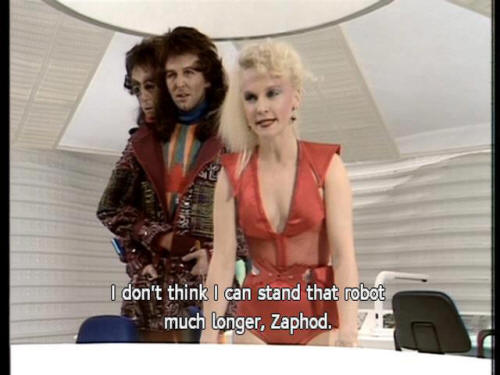
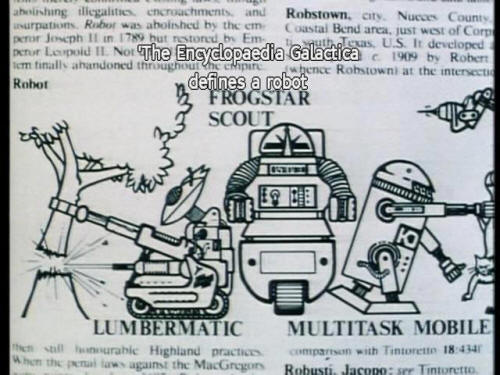
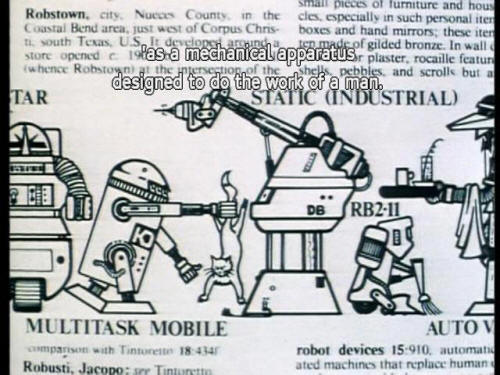
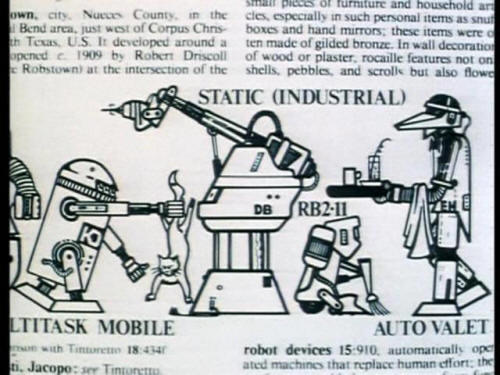
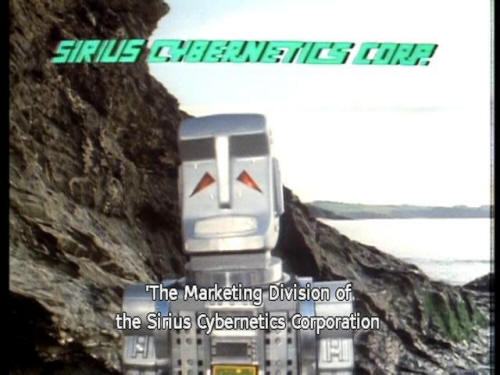
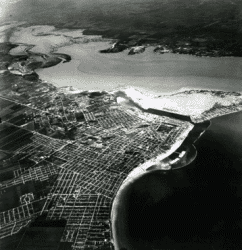
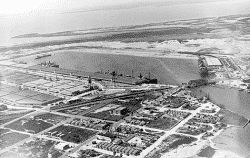
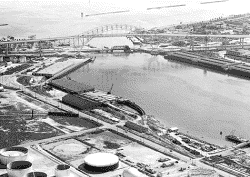
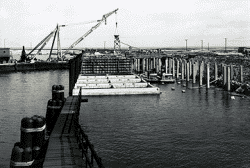
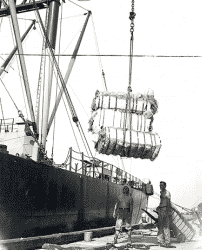
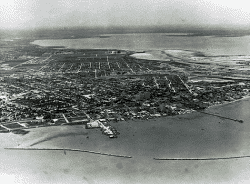
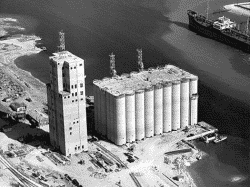
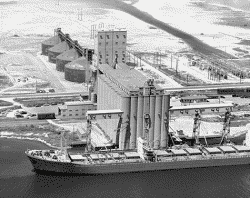
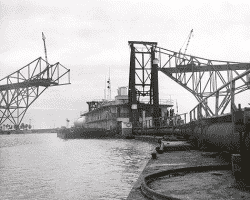
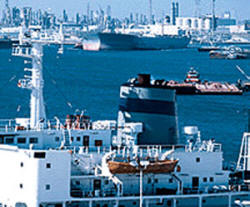
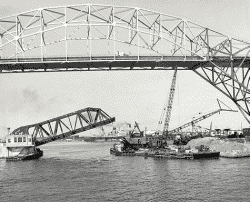
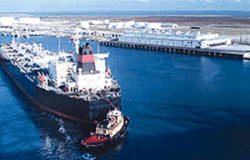
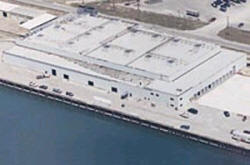
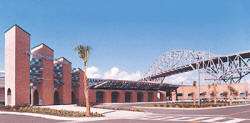
 Society for Interdisciplinary Studies (SIS)
Society for Interdisciplinary Studies (SIS) 